Dim Cave - We Saw A Fairy-tale World Of The Dungeon

Some people like to bring back cute trinkets from their travels. Some people like to discuss the most vivid memories of their travels on the last day of their trip. Some people like to return to the same places again and again. And we were just happy to have another day in paradise, because I really missed that feeling of maximum relaxation that only comes during vacation.


Dim Cave, Turkish name Dim Magarasi, is located just fifteen kilometers from the center of the resort town of Alanya. But getting there is not so easy. For this, you need to overcome the path along the mountain serpentine. We had a very exciting moment during the ascent, when our jeep on a narrow section of the road barely missed another excursion bus. We had a long time to line up, back up, and all this on the edge of the abyss, of course, we suffered fear.
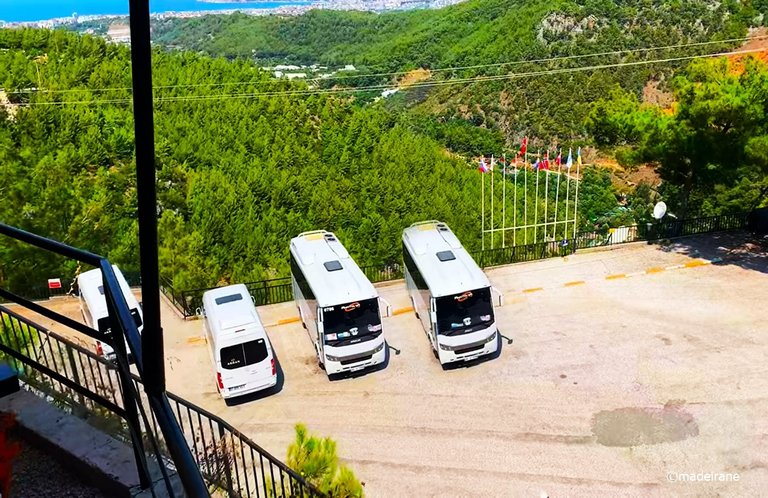
It is probably better and safer to get here by car. Or on foot from the nearest public transport stop. If someone likes long walks in such beautiful nature, then the four-kilometer path from the stop to the cave is not so difficult. There is a spacious parking lot near the natural attraction Dim Magarasi. Our group was dropped off there, and after receiving instructions from the guide, we moved up the stairs to the observation deck.
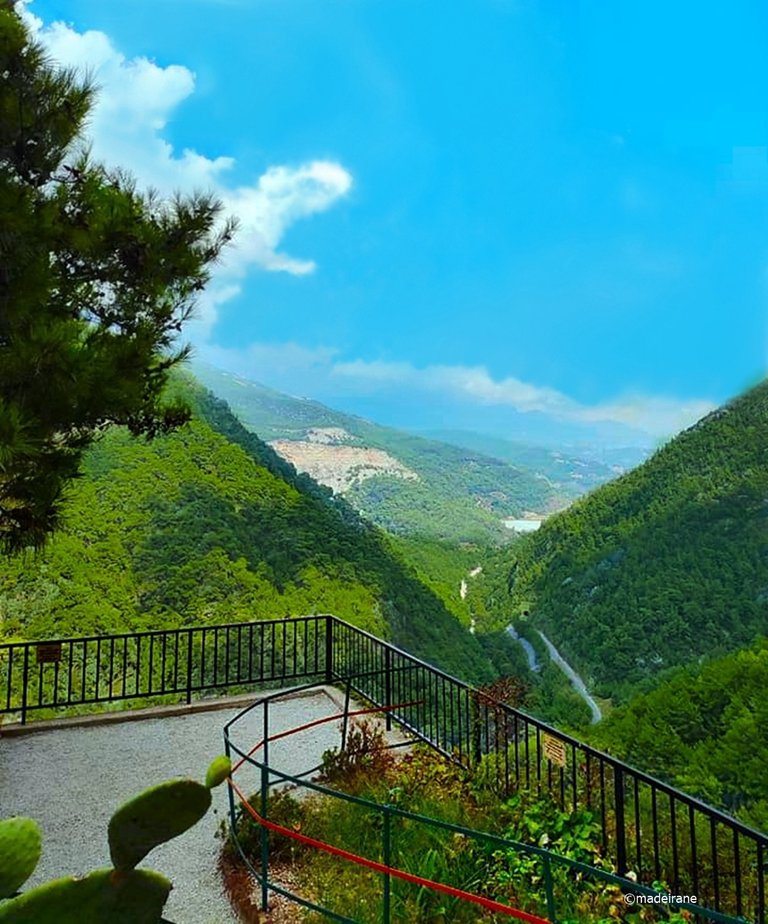
We climbed the stairs and reached the observation deck halfway. There we rested a little, took some photos and our guide told us about Dim cave itself, about its nature and its history. Dim Magarasi is located on the slope of Mount Tsebel Reis, above the gorge of the Dim Chay River. It was discovered by speleologists in 1986, and twenty-three years later it was already open as a tourist attraction for everyone to visit.

Then we walked along a path fragrant with the scent of pine trees past the small infrastructure of this tourist site. There are cafés, souvenir shops, and, of course, ticket offices.
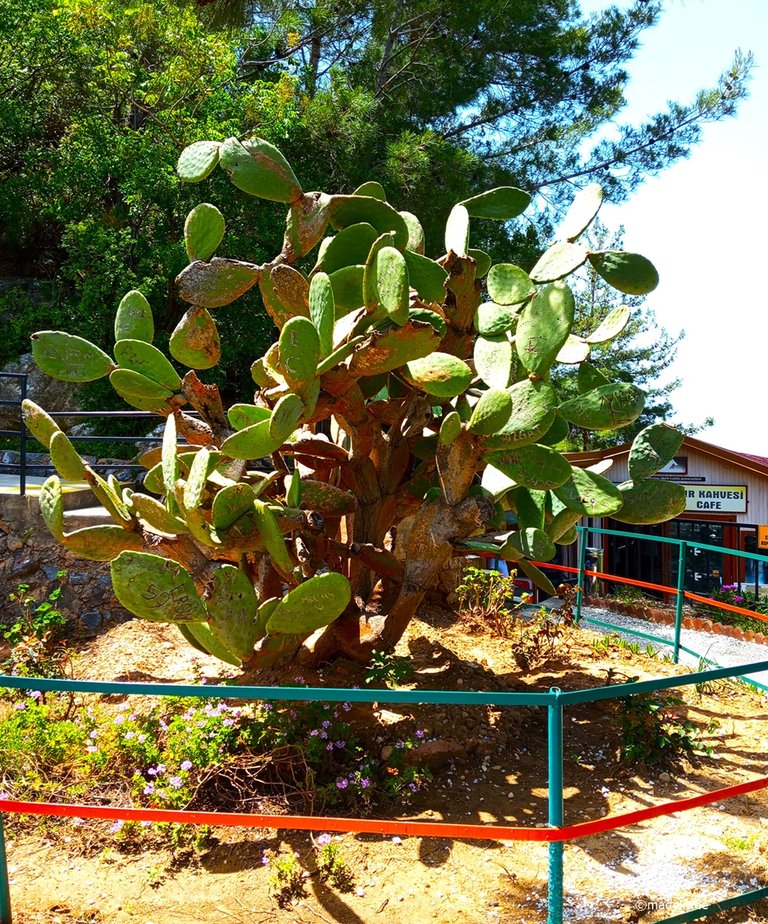
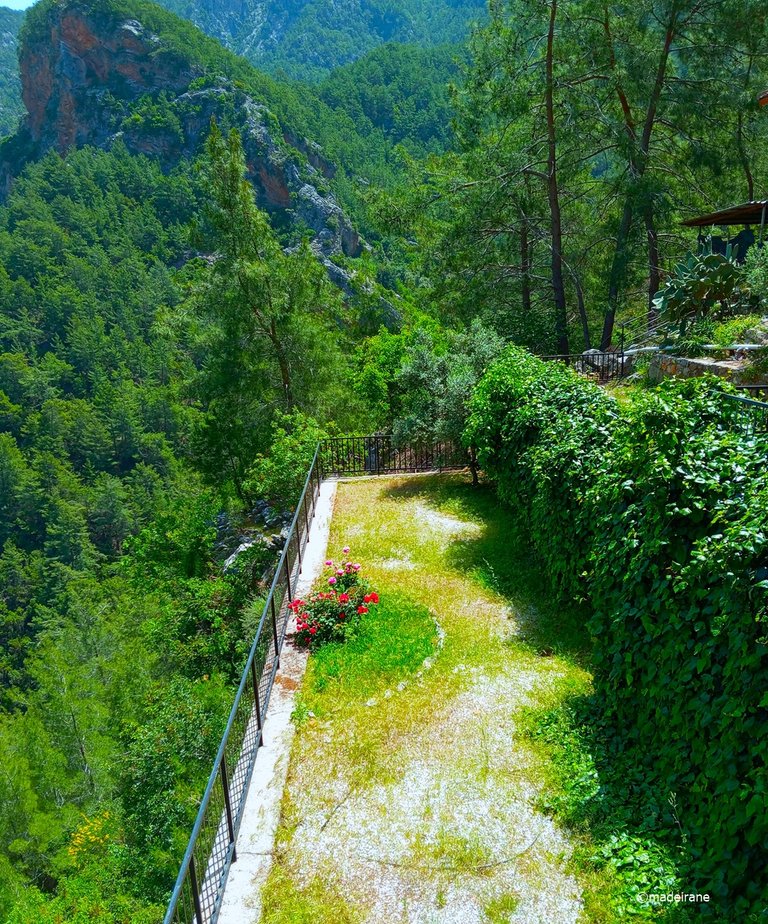
At the entrance to the cave there is a small gate. I would even say a wicket, with a corresponding inscription. There were some people during our visit. Everyone wanted to capture themselves as a keepsake. As soon as we entered, we found ourselves in a cramped space, and immediately began to descend a narrow corridor with low ceilings.

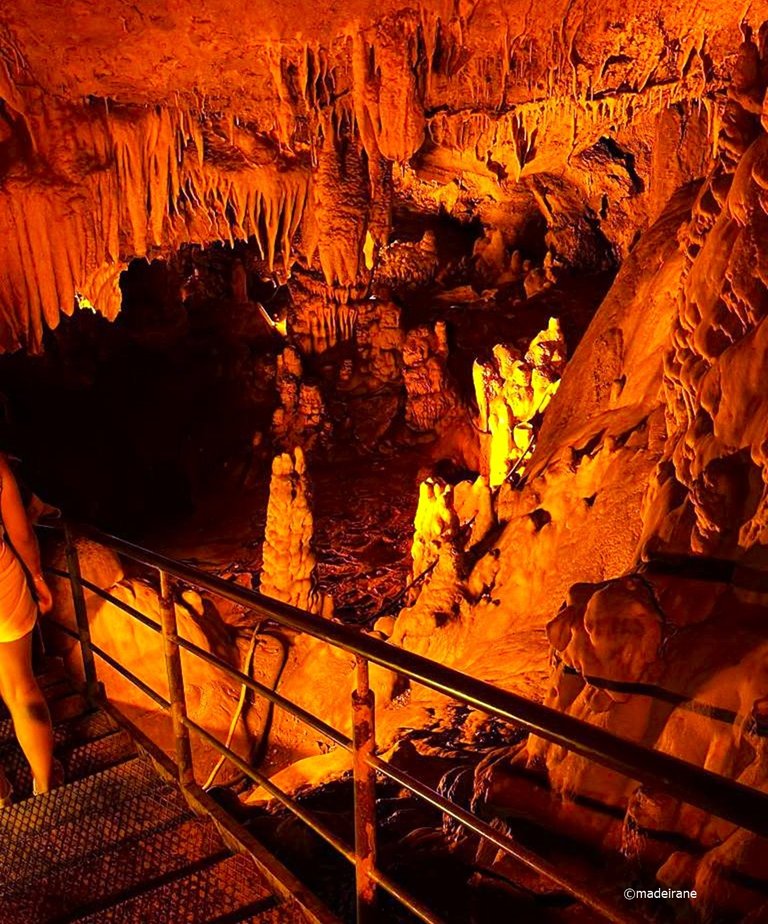
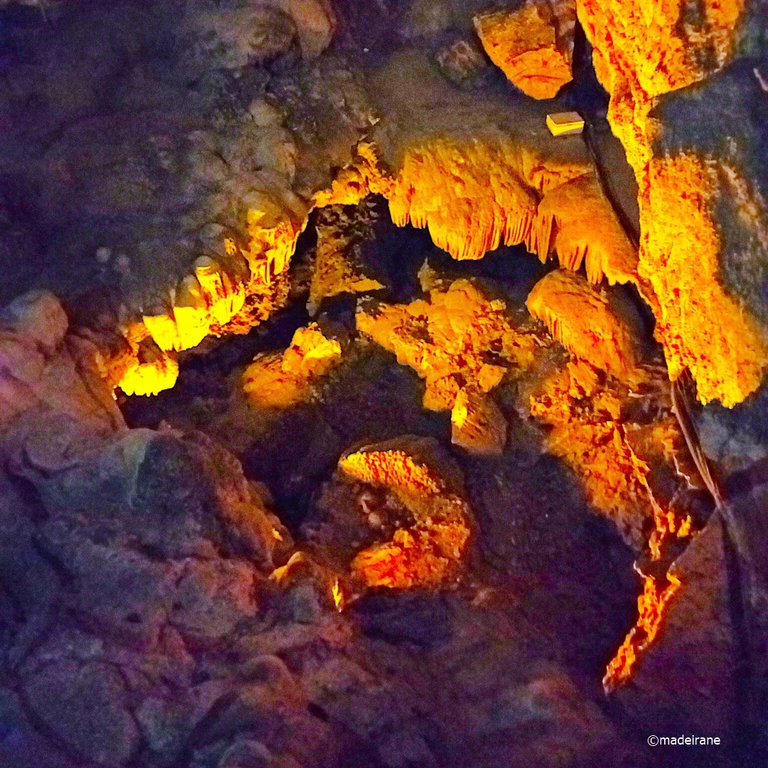
The further we went down the stairs, the stronger the feeling was that we would soon find ourselves deep underground. It was quite scary to look down. At such moments, it is better not to include fantasies about unforeseen collapses and other accidents in such places, so as not to spoil your pleasure from contemplating all this beauty of the underground kingdom in advance.

Dim Cave is one of the bigest caves in Europe. Its length is about four hundred meters and it is divided into two parts. One is very small. We did not notice it at first, but only noticed a branch to the side when we were returning. Well, the main hall is simply huge.
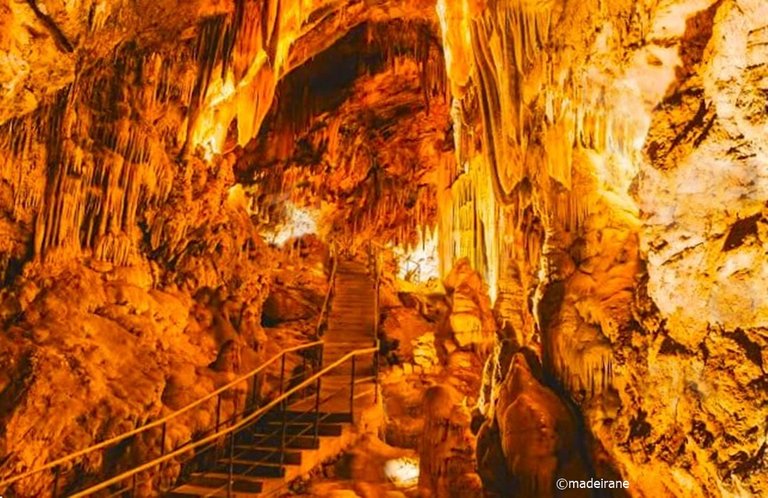
You walk along the bridges past all this splendor, and you feel like you are in a fairy tale; such bizarre shapes surround you. There is not a single flat surface in the cave. On all sides, stalagmites of an indefinite shape grow from somewhere below, and pointed stalactites hang from above.

The walls are decorated with fantastic streaks of various configurations. Some are smooth and streamlined, like jellyfish. In other places, they are straight and pointed, like the fangs of predatory monsters. The bizarre configurations of the growths excite the imagination. The intricate forms of the stone formations are frightening and attractive at the same time.
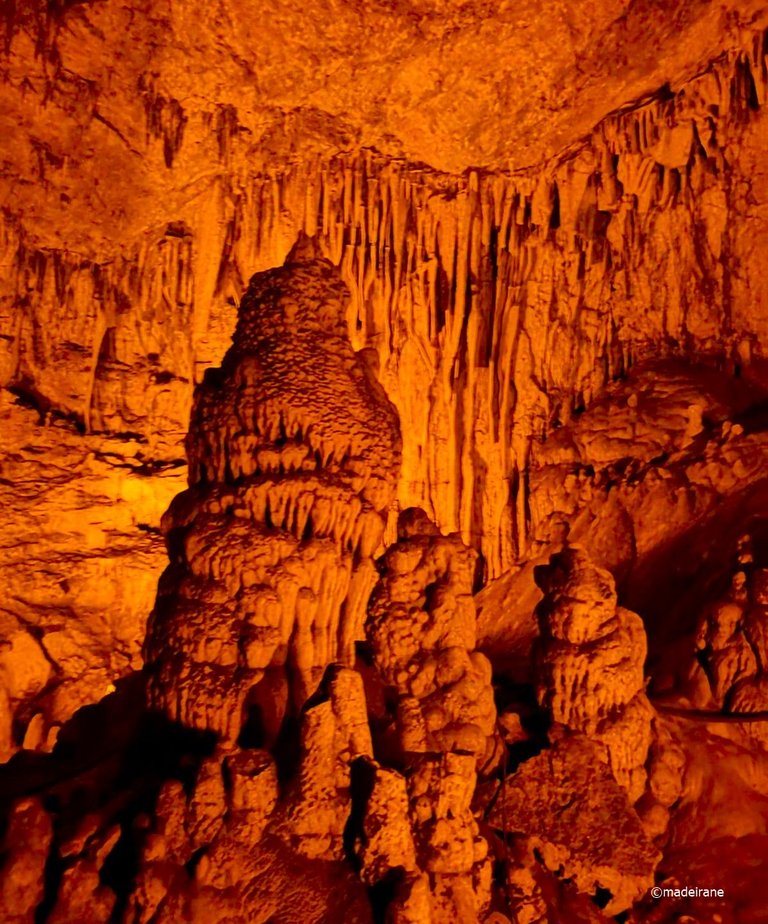
Admiring these masterpieces of nature, it seemed that we found ourselves on another planet. At times, Martian-like landscapes opened up before us. It is difficult to realize that all this magnificence was created by nature over the course of almost a million years. And these sculptures were formed thanks to only the streams of rainwater through cracks in the limestone rock.

Incredible patterns could be looked at endlessly. The thought arose that the great architect Gaudi drew his inspiration from such karst caves. And all this beauty went down somewhere, into the abyss. There were probably other unknown voids there, no less beautiful than those we passed by.
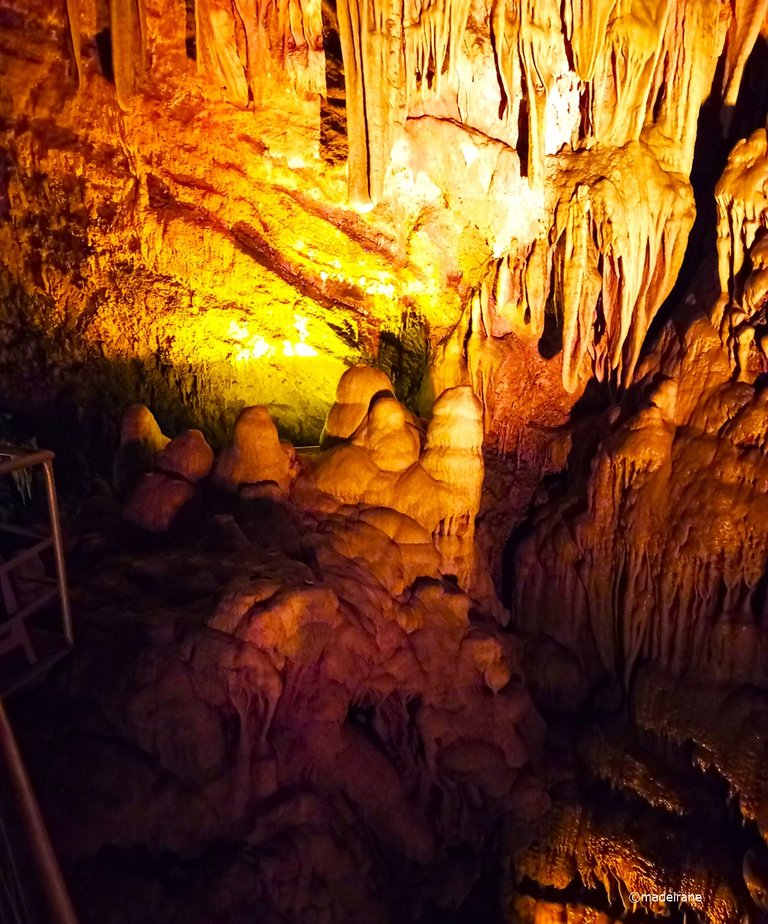
Walking a little further into the cave, we heard the sounds of music, and soon a surprise awaited us - a musician playing the flute. The sounds of a calm melody filling this unusual space added even more mystery to the cave. The acoustics here are unusually strong.
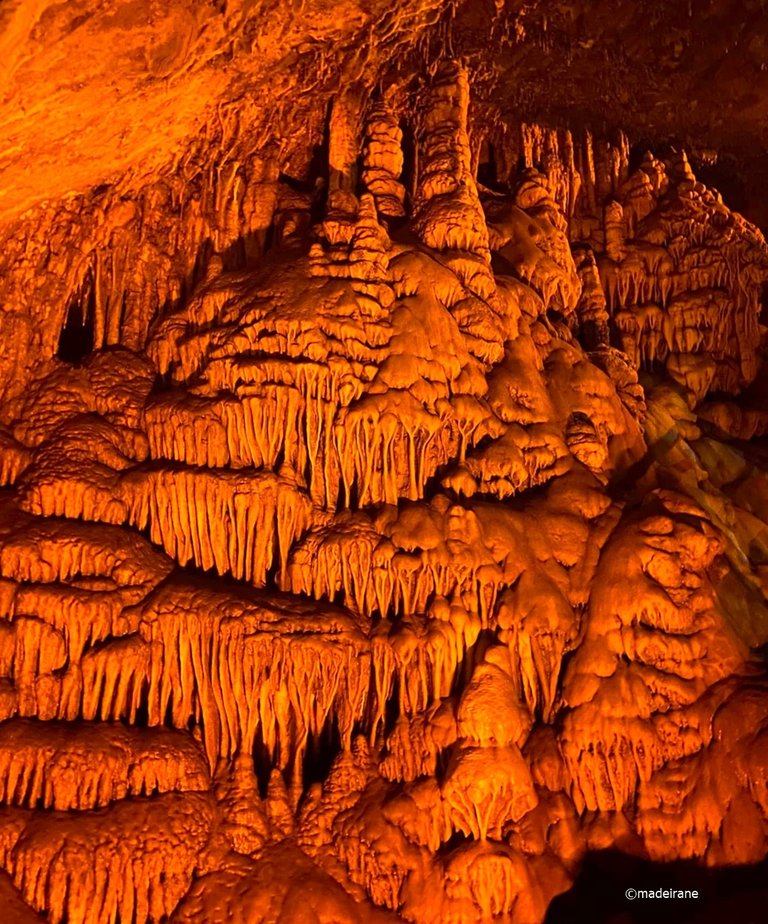
Some sources indicate that the constant temperature in the Dim cave fluctuates between 18 and 19 degrees at any time of the year. In fact, this is not true. I would definitely freeze at such a temperature. Most likely, it is cool in the cave in winter or in the off-season. But we were there in May, and in the cave we did not feel so cold that we needed to wear extra clothes. Due to the huge area, there is no strong humidity, like in the Dalmatash cave, for example. And compared to the heat that was outside, we were quite comfortable in the cave.
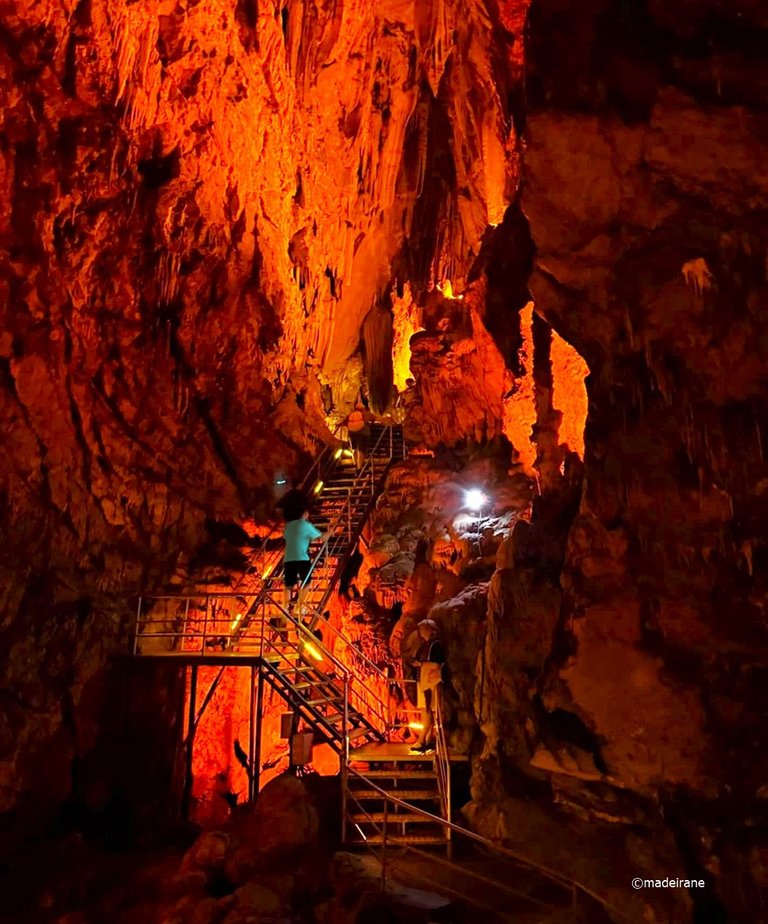
Probably, after heavy rains, water drips down on visitors from above. After all, the centuries-old process of stone growth formation has not been canceled, and nature continues its creativity to this day. And the views with each turn or ascent to a new level really became more interesting and charming.

Having reached the farthest part of the long corridor, we found ourselves at a small lake. Unlike the rest of the space, where yellow and orange tones predominate, the lake is beautifully illuminated in blue. This place is one of the most charming in the cave. It's a pity that my phone camera couldn't capture the huge majestic vaults surrounding this small body of water well enough.

The way back to the exit was no less beautiful. The lighting in the cave is subdued, but it perfectly highlights all these unusual limestone formations. In general, a lot of light is not needed here. Otherwise, unwanted flora will appear, and the ecosystem of this place will begin to be disturbed.

I would like to note that despite the large number of visitors, there was no crowding in the cave. Probably the huge size of the cave allowed us tourists to spread out evenly in its space and not disturb each other too much, enjoying the mystery of this extraordinary place. The exit to the surface is not as beautiful as the cave itself. Most likely, it was cut by a man. But this did not spoil the impressions of what we saw inside.
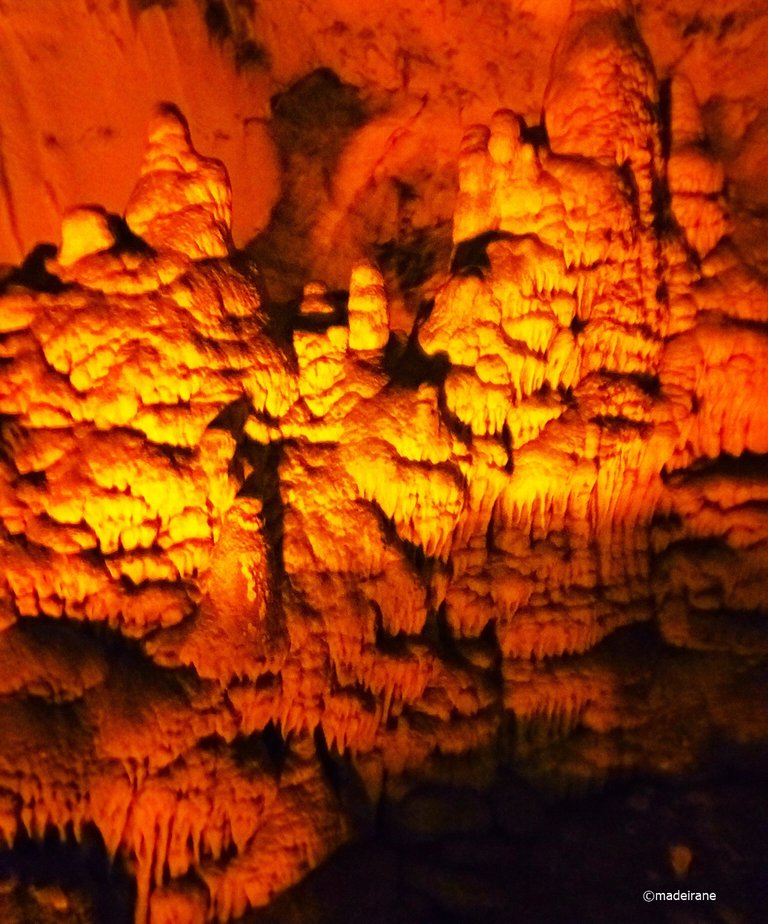
The journey through the magical world of the dungeon brought us only positive emotions. Unfortunately, there was not much time to explore the cave during our excursion. And I would have liked to spend more time in this fairy-tale world.
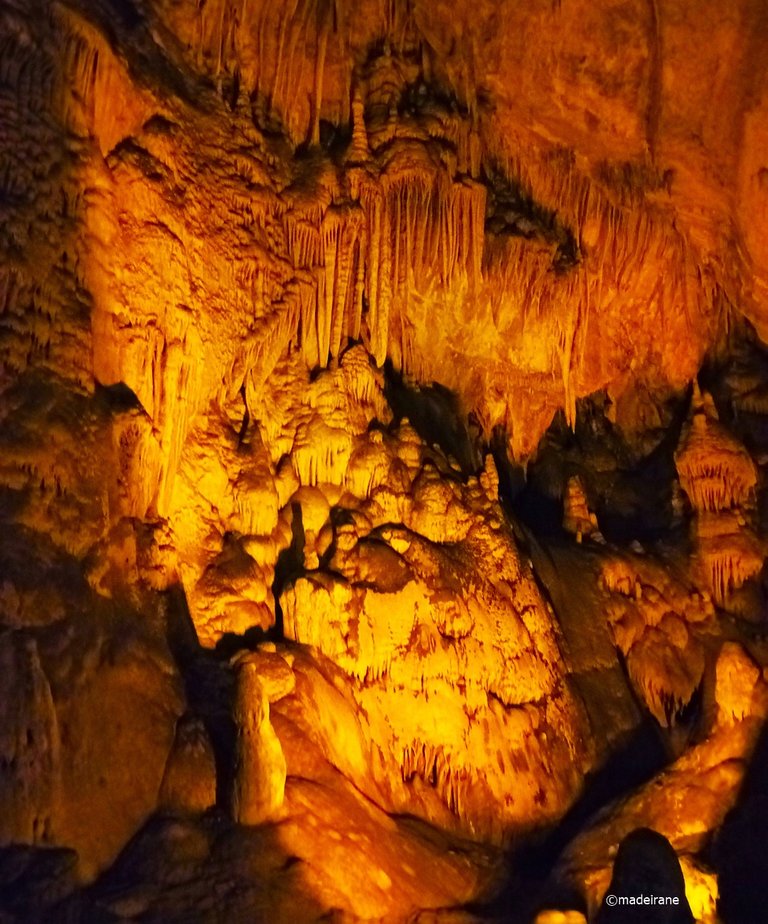
We lingered a bit at the souvenir shop, but bought only a magnet with a cave picture to remember this place by. We had to hurry to the bus. Already running, we cast a farewell glance at the mountain gorge, the Dim Chay River and the Taurus Mountains visible in the distance. By the way, somewhere behind the hills there is another cave, recently opened to tourists, and it is called the Dwarf Cave.

After the cave, we moved for lunch at Dim river café. On the way, we stopped at the fruit plantation, got some free snacks of fresh fruits, jems and syrup from local fruits, and checked how trees grow there.
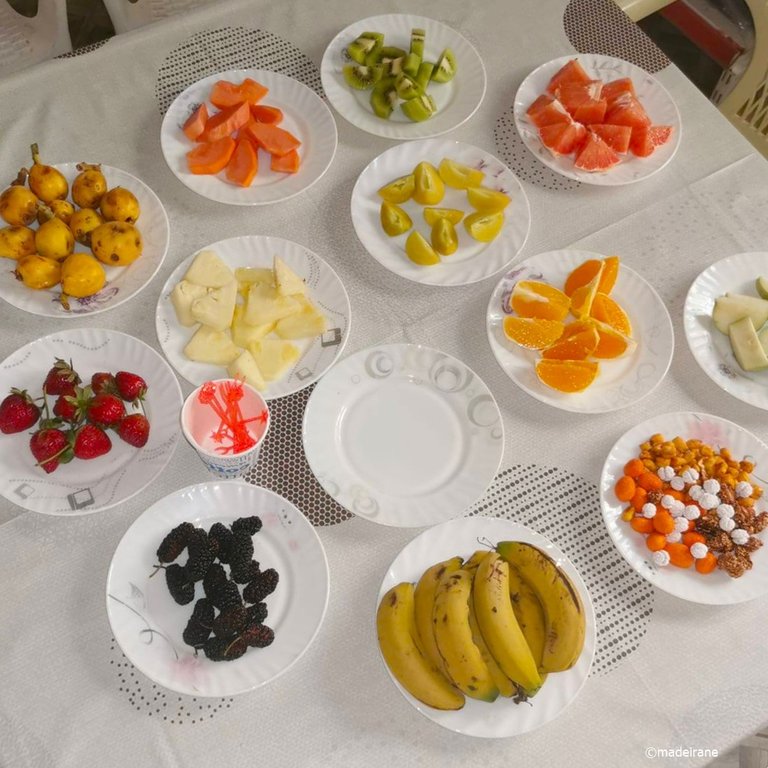
The lunch we had at an unusual café. It is not very comfortable to sit on pillows on the ground for Europeans, who are used to tables and chairs. But it was a new experience.
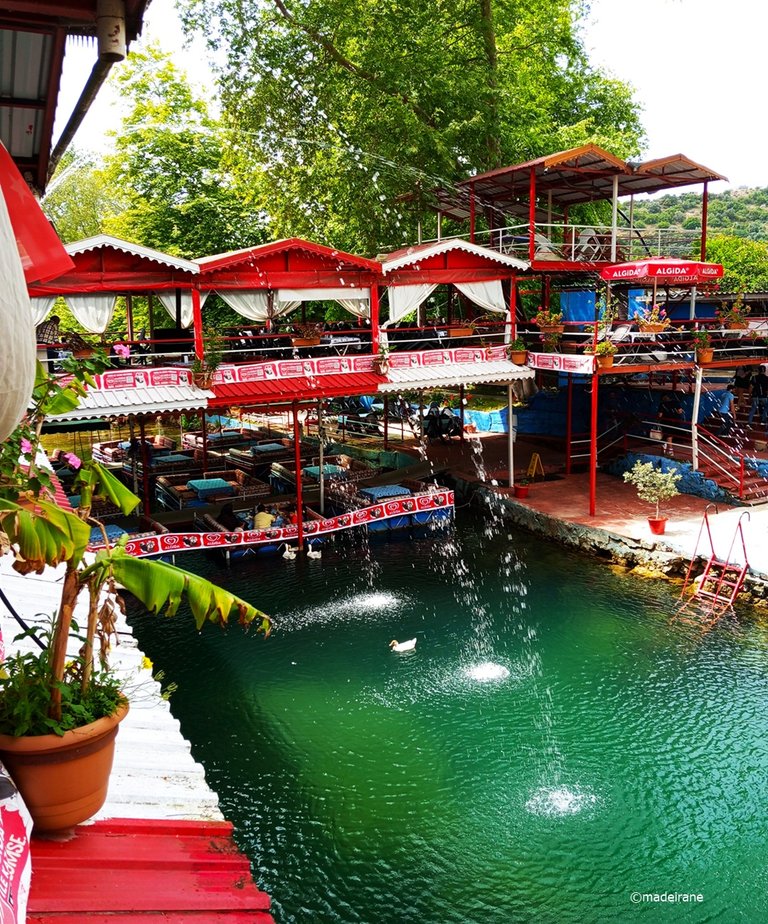
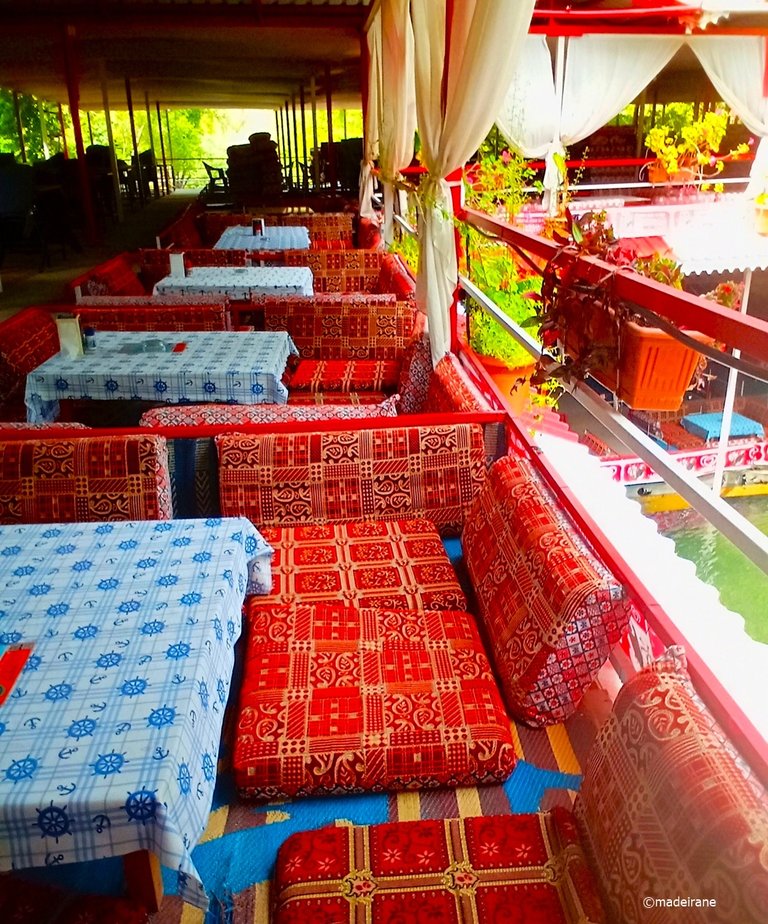

💝💝💝💝💝💝💝💝💝💝
With love, @madeirane
Photos are taken by me.
© 2025
Translated from Lithuanian with DeepL.com (free version).
Kai kurie žmonės iš kelionių mėgsta parsivežti mielų smulkmenų. Kai kurie žmonės mėgsta paskutinę kelionės dieną aptarti ryškiausius kelionės prisiminimus. Kai kurie žmonės mėgsta vėl ir vėl grįžti į tas pačias vietas. O mes tiesiog džiaugėmės dar viena diena rojuje, nes man labai trūko to maksimalaus atsipalaidavimo jausmo, kuris būna tik per atostogas.
Dim urvas, turkišku pavadinimu Dim Magarasi, yra vos už penkiolikos kilometrų nuo Alanijos kurorto centro. Tačiau patekti į jį nėra taip paprasta. Tam reikia įveikti kelią kalnų serpantinais. Kylant patyrėme labai įdomią akimirką, kai mūsų džipas siaurame kelio ruože vos vos prasilenkė su kitu ekskursijų autobusu. Turėjome ilgai rikiuotis, grįžti atgal, ir visa tai ant bedugnės krašto, žinoma, patyrėme baimę.
Tikriausiai geriau ir saugiau čia patekti automobiliu. Arba pėsčiomis nuo artimiausios viešojo transporto stotelės. Jei kas nors mėgsta ilgus pasivaikščiojimus tokioje gražioje gamtoje, tai keturių kilometrų kelias nuo stotelės iki urvo nėra toks sudėtingas.
Šalia gamtos objekto Dim Magarasi yra erdvi automobilių stovėjimo aikštelė. Mūsų grupę ten išlaipino ir, gavę gido nurodymus, pajudėjome laiptais į apžvalgos aikštelę. Pakilome laiptais ir pusiaukelėje pasiekėme apžvalgos aikštelę. Ten šiek tiek pailsėjome, padarėme keletą nuotraukų, o gidas mums papasakojo apie patį Dim urvą, jo gamtą ir istoriją. Dim Magarasi yra ant Cebel Reiso kalno šlaito, virš Dim Čajo upės tarpeklio. Jį 1986 m. atrado speleologai, o po dvidešimt trejų metų jis jau buvo atidarytas kaip turistų lankomas objektas, kurį galėjo aplankyti visi norintys.
Tada ėjome pušų kvapu kvepiančiu taku pro nedidelę šios turistinės vietovės infrastruktūrą. Čia yra kavinių, suvenyrų parduotuvių ir, žinoma, bilietų kasų.
Prie įėjimo į urvą yra nedideli vartai. Netgi sakyčiau, varteliai su atitinkamu užrašu. Mūsų apsilankymo metu buvo keletas žmonių. Kiekvienas norėjo užfiksuoti save atminimui. Vos įėję atsidūrėme ankštoje erdvėje ir iškart pradėjome leistis siauru koridoriumi žemomis lubomis.
Kuo toliau leidomės laiptais žemyn, tuo stipresnis buvo jausmas, kad netrukus atsidursime giliai po žeme. Buvo gana baisu pažvelgti žemyn. Tokiomis akimirkomis geriau neįjungti fantazijų apie nenumatytas griūtis ir kitus nelaimingus atsitikimus tokiose vietose, kad iš anksto nesugadintumėte malonumo kontempliuoti visą šį požemių karalystės grožį.
Dim urvas yra vienas didžiausių urvų Europoje. Jo ilgis - apie keturis šimtus metrų, jis padalytas į dvi dalis. Viena jų yra labai maža. Iš pradžių jos nepastebėjome, tik grįždami pastebėjome į šoną atšaką. Na, o pagrindinė salė tiesiog milžiniška.
Eini tilteliais pro visą tą didybę ir jautiesi tarsi pasakoje - tokios keistos formos supa tave. Urve nėra nė vieno lygaus paviršiaus. Iš visų pusių kažkur apačioje auga neapibrėžtos formos stalagmitai, o viršuje kabo smailūs stalaktitai.
Sienos papuoštos fantastiškais įvairių konfigūracijų dryžiais. Kai kurios jų lygios ir aptakios, tarsi medūzos. Kitur jos tiesios ir smailios, tarsi plėšrių pabaisų kandžiai. Keistos konfigūracijos išaugos žadina vaizduotę. Sudėtingos akmeninių darinių formos gąsdina ir kartu traukia.
Žavintis šiais gamtos šedevrais atrodė, kad atsidūrėme kitoje planetoje. Kartais prieš mus atsiverdavo marsietiški peizažai. Sunku suvokti, kad visą šią didybę gamta sukūrė per beveik milijoną metų. Ir šios skulptūros susiformavo tik lietaus vandens srovių dėka pro kalkakmenio uolienų plyšius.
Į neįtikėtinus raštus galima žiūrėti be galo. Kilo mintis, kad didysis architektas Gaudi įkvėpimo sėmėsi iš tokių karstinių urvų. Ir visas šis grožis nugrimzdo kažkur žemyn, į bedugnę. Tikriausiai ten buvo kitų nežinomų tuštumų, ne mažiau gražių nei tos, pro kurias praėjome.
Eidami šiek tiek toliau į urvą išgirdome muzikos garsus, o netrukus mūsų laukė staigmena - fleita grojantis muzikantas. Ramios melodijos garsai, užpildę šią neįprastą erdvę, suteikė urvui dar daugiau paslaptingumo. Akustika čia nepaprastai stipri.
Kai kuriuose šaltiniuose nurodoma, kad nuolatinė temperatūra Dim urve bet kuriuo metų laiku svyruoja nuo 18 iki 19 laipsnių. Iš tikrųjų tai nėra tiesa. Esant tokiai temperatūrai tikrai sušalčiau. Greičiausiai urve vėsu būna žiemą arba ne sezono metu. Tačiau mes ten buvome gegužės mėnesį, ir urve nebuvo taip šalta, kad reikėtų dėvėti papildomus drabužius. Dėl didžiulio ploto čia nėra stiprios drėgmės. Ir palyginti su lauke tvyrojusiu karščiu, urve jautėmės gana patogiai.
Tikriausiai po stiprių liūčių ant lankytojų iš viršaus laša vanduo. Juk šimtmečius trukęs akmenų augimo formavimosi procesas nebuvo atšauktas, ir gamta savo kūrybingumą tęsia iki šiol. O vaizdai su kiekvienu posūkiu ar pakilimu į naują lygmenį iš tiesų darėsi vis įdomesni ir žavesni.
Pasiekę tolimiausią ilgo koridoriaus dalį, atsidūrėme prie nedidelio ežero. Skirtingai nei likusi erdvė, kurioje vyrauja geltoni ir oranžiniai tonai, ežeras gražiai apšviestas mėlynai. Ši vieta - viena žaviausių urve. Gaila, kad mano telefono fotoaparatui nepavyko pakankamai gerai įamžinti didingų didingų skliautų, supančių šį nedidelį vandens telkinį.
Kelias atgal prie išėjimo buvo ne mažiau gražus. Apšvietimas urve prislopintas, tačiau puikiai išryškina visus šiuos neįprastus kalkakmenio darinius. Apskritai daug šviesos čia nereikia. Priešingu atveju atsiras nepageidaujamos augmenijos ir pradės trikdyti šios vietos ekosistemą.
Norėčiau pažymėti, kad, nepaisant didelio lankytojų skaičiaus, urve nebuvo jokios spūsties. Tikriausiai didžiulis urvo dydis leido mums, turistams, tolygiai pasiskirstyti jo erdvėje ir pernelyg netrukdyti vieni kitiems, mėgautis šios nepaprastos vietos paslaptimi. Išėjimas į paviršių nėra toks gražus kaip pats urvas. Greičiausiai jį iškirto žmogus. Tačiau tai nesugadino įspūdžių iš to, ką pamatėme viduje.
Kelionė po stebuklingą požemių pasaulį mums suteikė tik teigiamų emocijų. Deja, mūsų ekskursijos metu nebuvo daug laiko tyrinėti urvą. O aš būčiau norėjusi šiame pasakų pasaulyje praleisti daugiau laiko.
Šiek tiek užtrukome suvenyrų parduotuvėje, bet nusipirkome tik magnetuką su urvo nuotrauka, kad prisimintume šią vietą. Turėjome skubėti į savo džipą. Jau bėgdami metėme atsisveikinimo žvilgsnį į kalnų tarpeklį, tolumoje matomą Dim Čajo upę ir Tauro kalnus. Beje, kažkur už kalvų yra dar vienas urvas, neseniai atidarytas turistams, jis vadinamas Nykštukų urvu.
Po urvo persikėlėme pietauti į Dim upės kavinę. Pakeliui užsukome į vaisių plantaciją, nemokamai užkandome šviežiais vaisiais, džemais ir sirupu iš vietinių vaisių, apžiūrėjome, kaip ten auga medžiai.
Pietus valgėme neįprastoje kavinėje. Europiečiams, pripratusiems prie stalų ir kėdžių, nelabai patogu sėdėti ant pagalvių ant žemės. Tačiau tai buvo nauja patirtis.
You can check out this post and your own profile on the map. Be part of the Worldmappin Community and join our Discord Channel to get in touch with other travelers, ask questions or just be updated on our latest features.
A very extraordinary trip and full of natural beauty that is very amazing I really like it You get a paradise that really makes you very entertained by enjoying it
Sending Love and Ecency Curation Vote!
 Please Vote for our New Proposal! 🙏
Please Vote for our New Proposal! 🙏
A breathtaking underground adventure. It’s amazing how nature can create something so intricate and otherworldly with nothing but time and water. 🩷